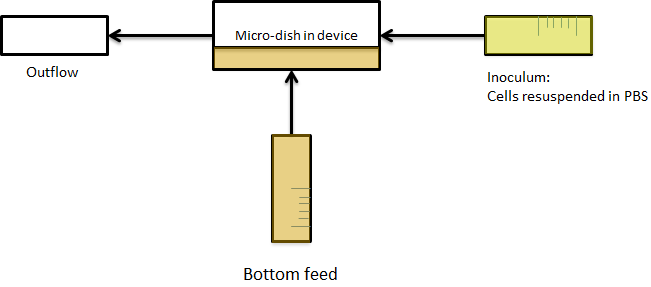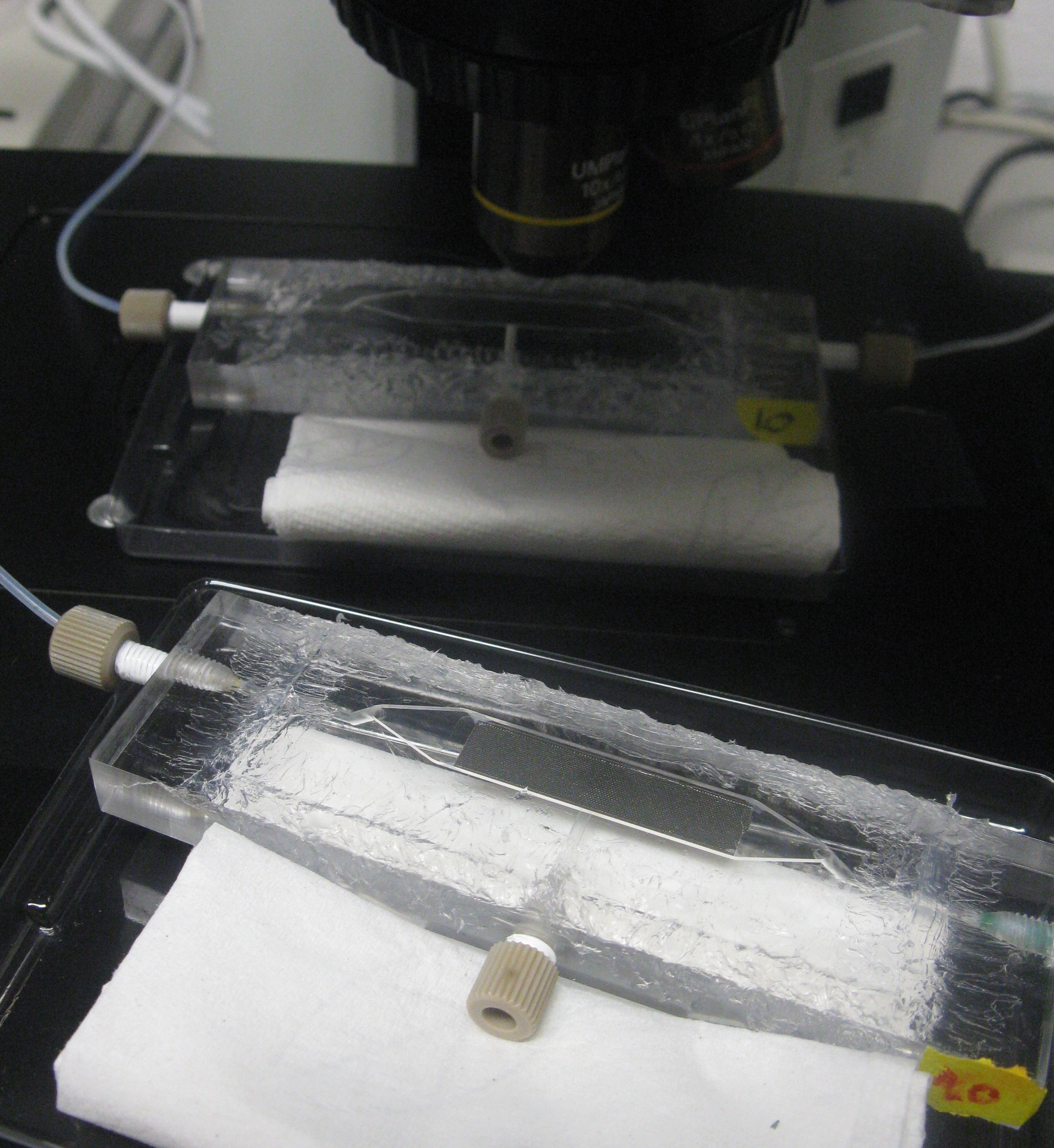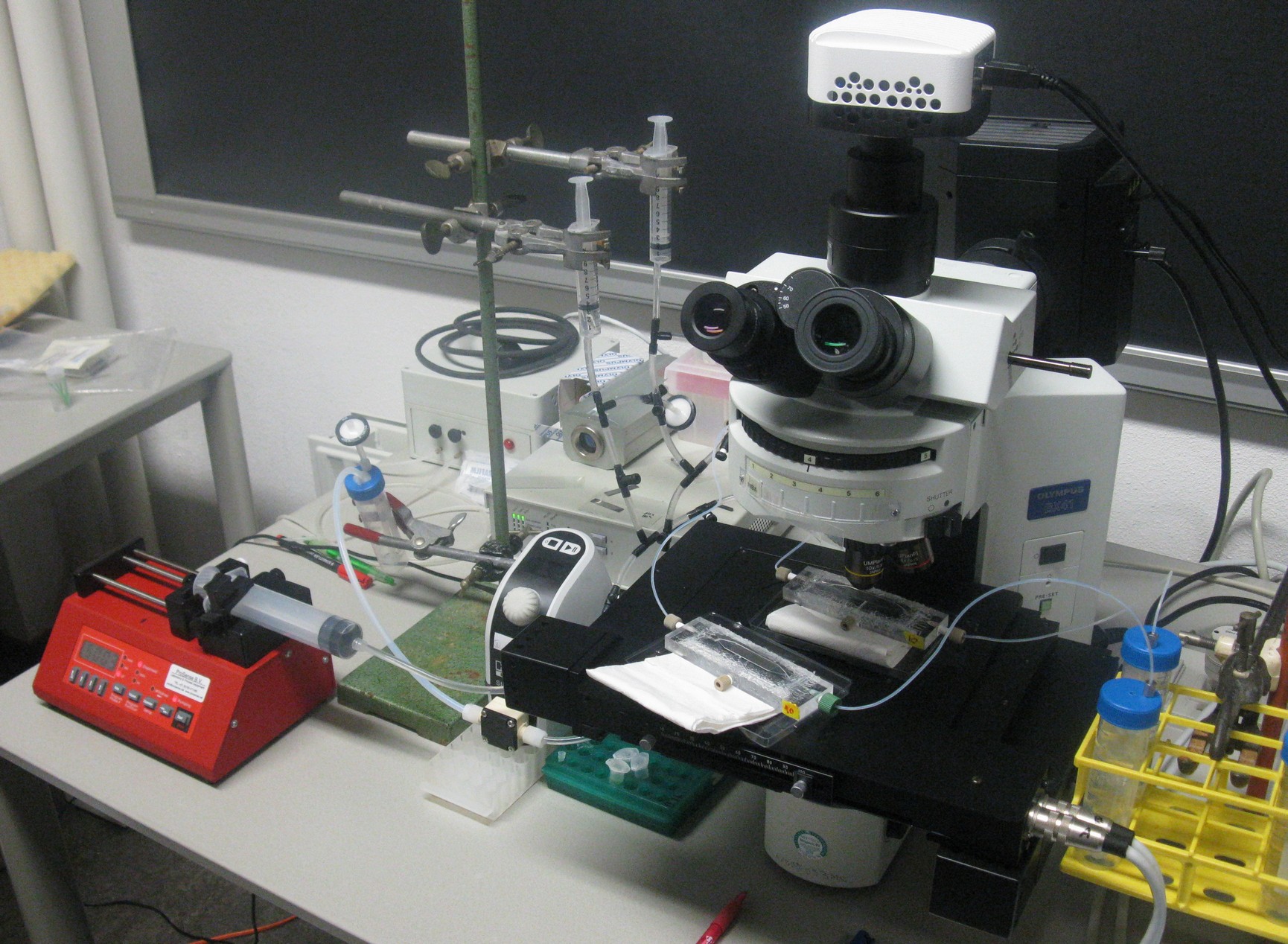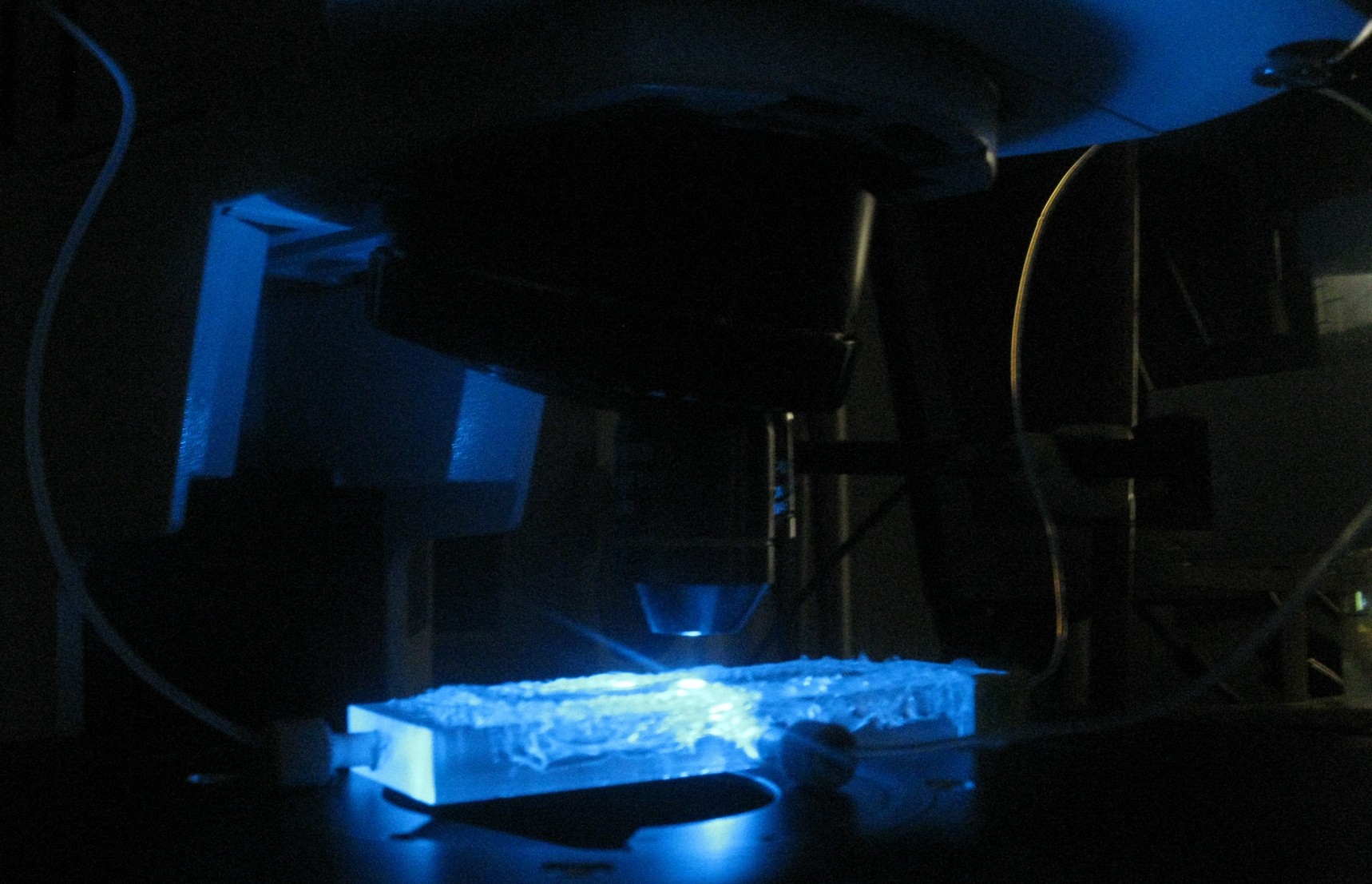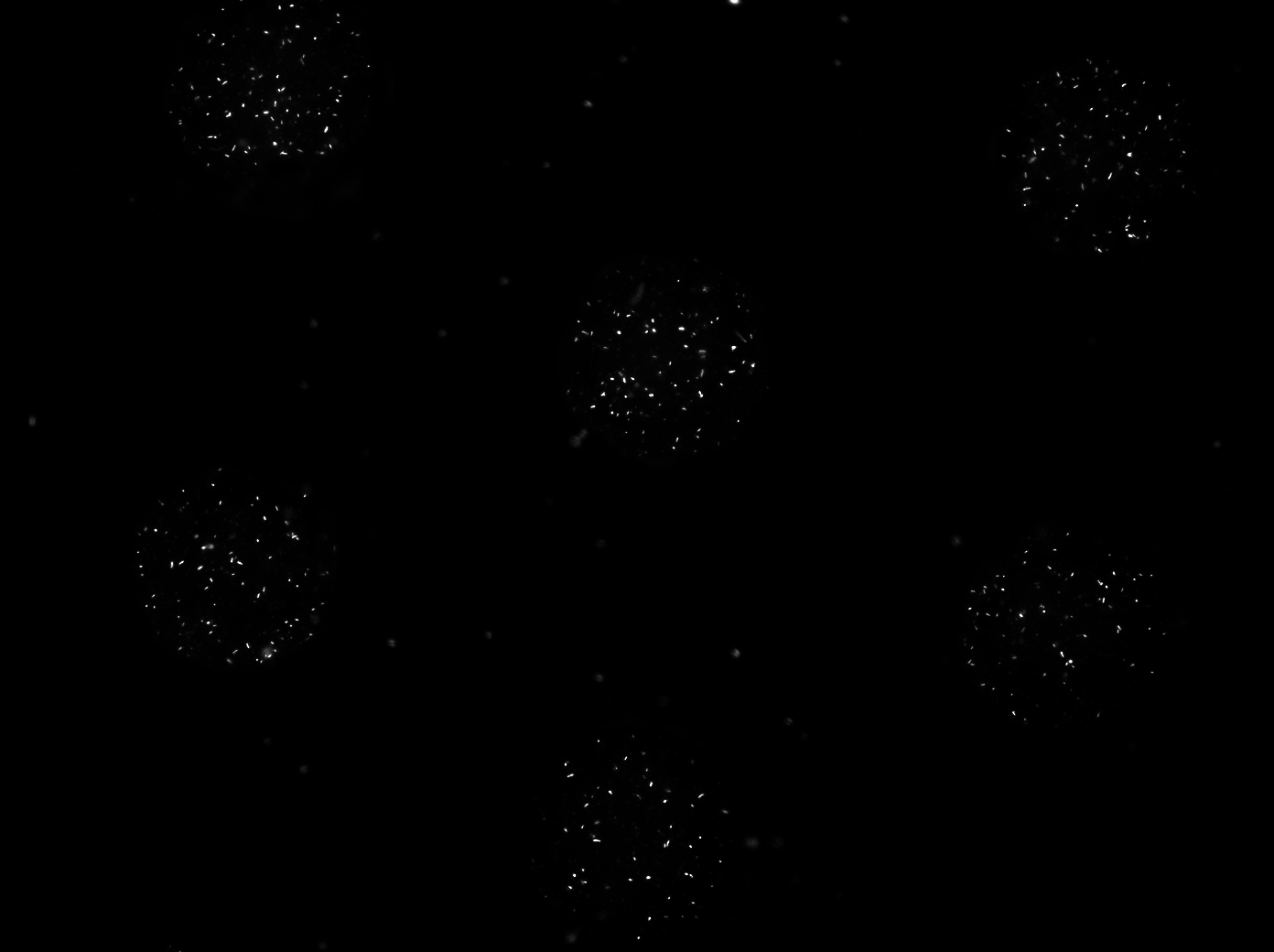Team:Wageningen UR/Project/DevicesSetup
From 2011.igem.org
(→Custom fluidic device designed by Team Wageningen UR to measure oscillations) |
(→Custom fluidic device designed by Team Wageningen UR to measure oscillations) |
||
| Line 24: | Line 24: | ||
=== Choosing the ideal bacterial growing platform === | === Choosing the ideal bacterial growing platform === | ||
| - | In order to physically constrain the bacteria, Hasty used a trapping chamber as depicted in Figure 1. The chamber he used was 100 by 100 by 1 micron. This caused the cells to grow in a monolayer. AHL and excess cells were flushed away through the main channel | + | In order to physically constrain the bacteria, Hasty used a trapping chamber as depicted in Figure 1. The chamber he used was 100 by 100 by 1 micron. This caused the cells to grow in a monolayer. AHL and excess cells were flushed away through the main channel [1]. |
[[File:Hasty_device_WUR.png|200px|center]] | [[File:Hasty_device_WUR.png|200px|center]] | ||
[ref][[File:Legend_device_WUR.png|140px|center]] | [ref][[File:Legend_device_WUR.png|140px|center]] | ||
| Line 34: | Line 34: | ||
'''Fig.2:''' This setup imposes the problem that the diffusion of AHL is much slower than the flow rate over the sieve. Therefore, the AHL produced will always be flushed away before a uniform concentration can be established over the whole cell culture, thus preventing any synchronized behavior to arise. The use of a microsieve in the course of our iGEM project was therefore discarded. | '''Fig.2:''' This setup imposes the problem that the diffusion of AHL is much slower than the flow rate over the sieve. Therefore, the AHL produced will always be flushed away before a uniform concentration can be established over the whole cell culture, thus preventing any synchronized behavior to arise. The use of a microsieve in the course of our iGEM project was therefore discarded. | ||
| - | The problem described above does not arise when using the microdish. In the 40 micron deep wells the cells can be trapped and AHL will have a better chance to establish a uniform concentration throughout the well. This will create a higher chance of synchronized oscillatory behavior of the cells growing in a well. Special care has to be taken with the velocities of the fluid flowing over the wells: | + | The problem described above does not arise when using the microdish. In the 40 micron deep wells the cells can be trapped and AHL will have a better chance to establish a uniform concentration throughout the well. This will create a higher chance of synchronized oscillatory behavior of the cells growing in a well. Special care has to be taken with the velocities of the fluid flowing over the wells: if the flow rate is too high, the cells will be spilled out of the wells. This behavior was observed under the microscope. |
| Line 47: | Line 47: | ||
| - | Because it is not necessary for our system to have a flow going over the wells we eventually only used bottom flow, as depicted in figure 5 | + | Because it is not necessary for our system to have a flow going over the wells we eventually only used bottom flow, as depicted in figure 5. Our resulting setup enabled us to bottom feed our bacteria, this is depicted in figure 6. This allowed the measurements to be taken continuously for various hours, as nutrients could diffuse through the bottom of the wells. Measurements were taken with the use of our LEGO robot (see [https://2011.igem.org/Team:Wageningen_UR/Project/DevicesFunFacts fun facts]). |
[[File:Micro-dish2_device_WUR.png|200px]] [[File:Bottom_feed_WUR.png|500px|right]] | [[File:Micro-dish2_device_WUR.png|200px]] [[File:Bottom_feed_WUR.png|500px|right]] | ||
| Line 105: | Line 105: | ||
[[Team:Wageningen_UR/Project/DevicesMeasuringOscillations#Customary_fluidic_device_designed_by_Team_Wageningen_UR_to_measure_oscillations| back to top]] | [[Team:Wageningen_UR/Project/DevicesMeasuringOscillations#Customary_fluidic_device_designed_by_Team_Wageningen_UR_to_measure_oscillations| back to top]] | ||
| + | |||
| + | '''Links and references:''' | ||
| + | |||
| + | [1][http://www.nature.com/nature/journal/v463/n7279/abs/nature08753.html Danino et al. 2010] | ||
}} | }} | ||
Revision as of 19:47, 21 September 2011
 "
"








